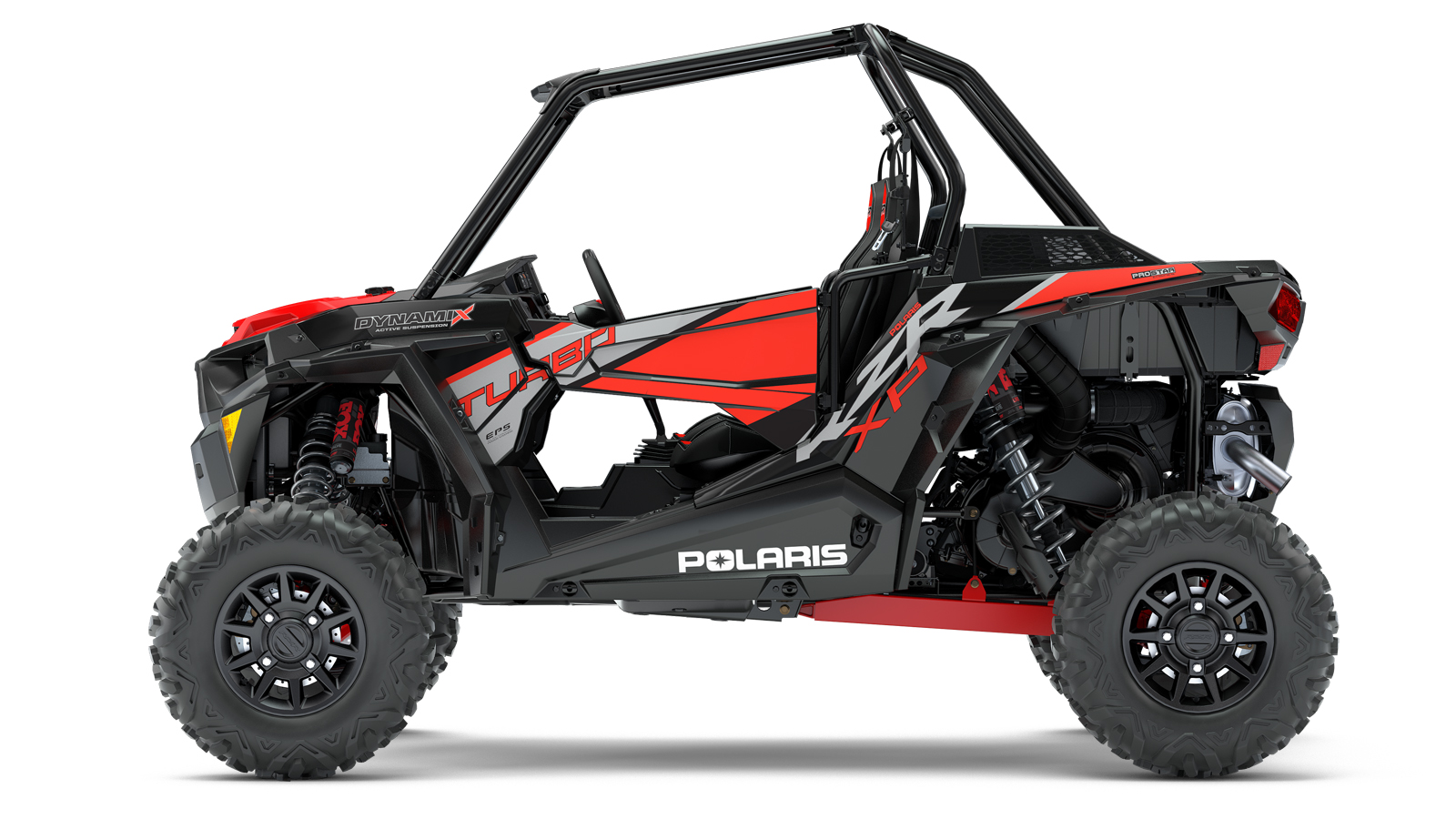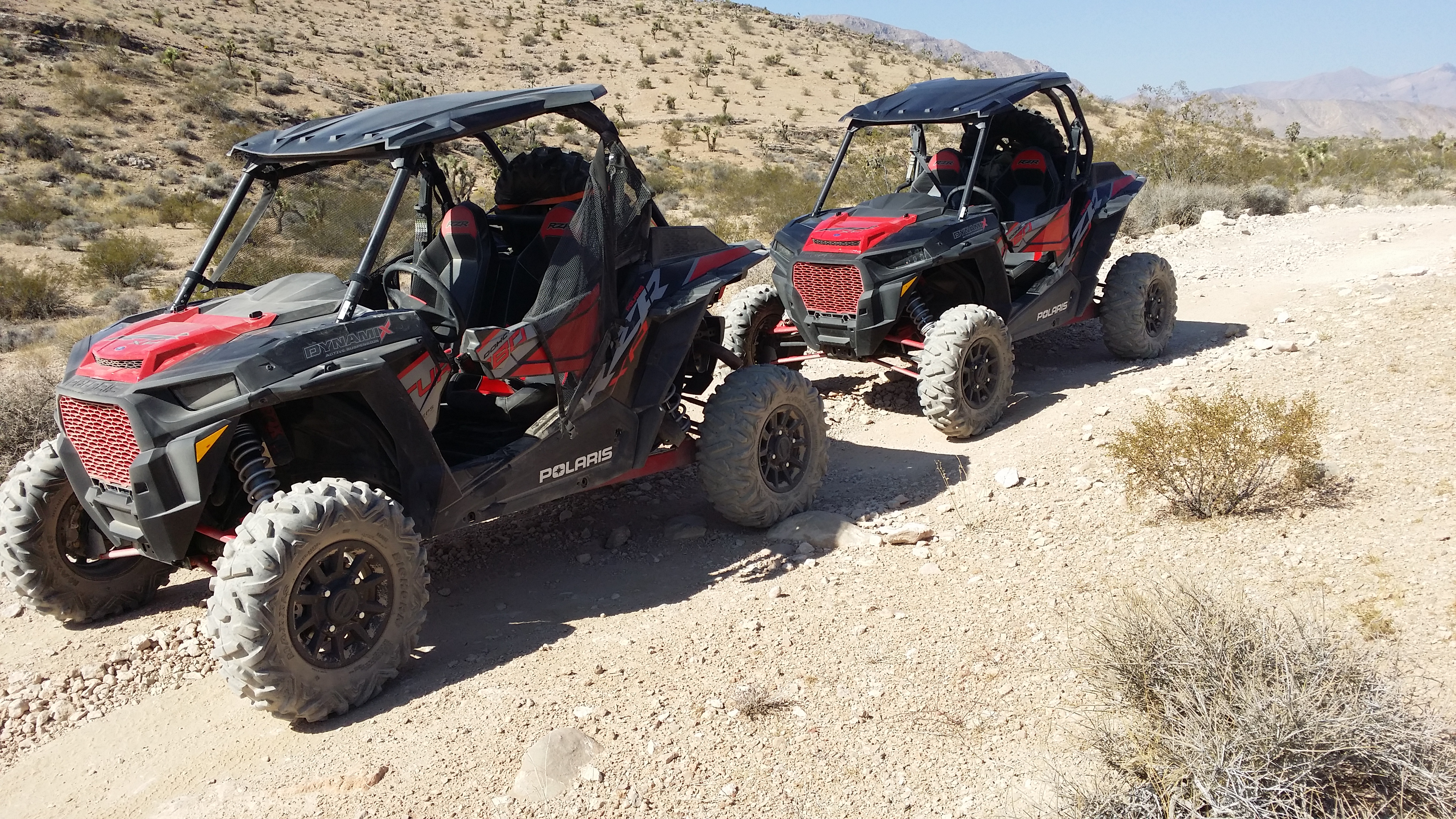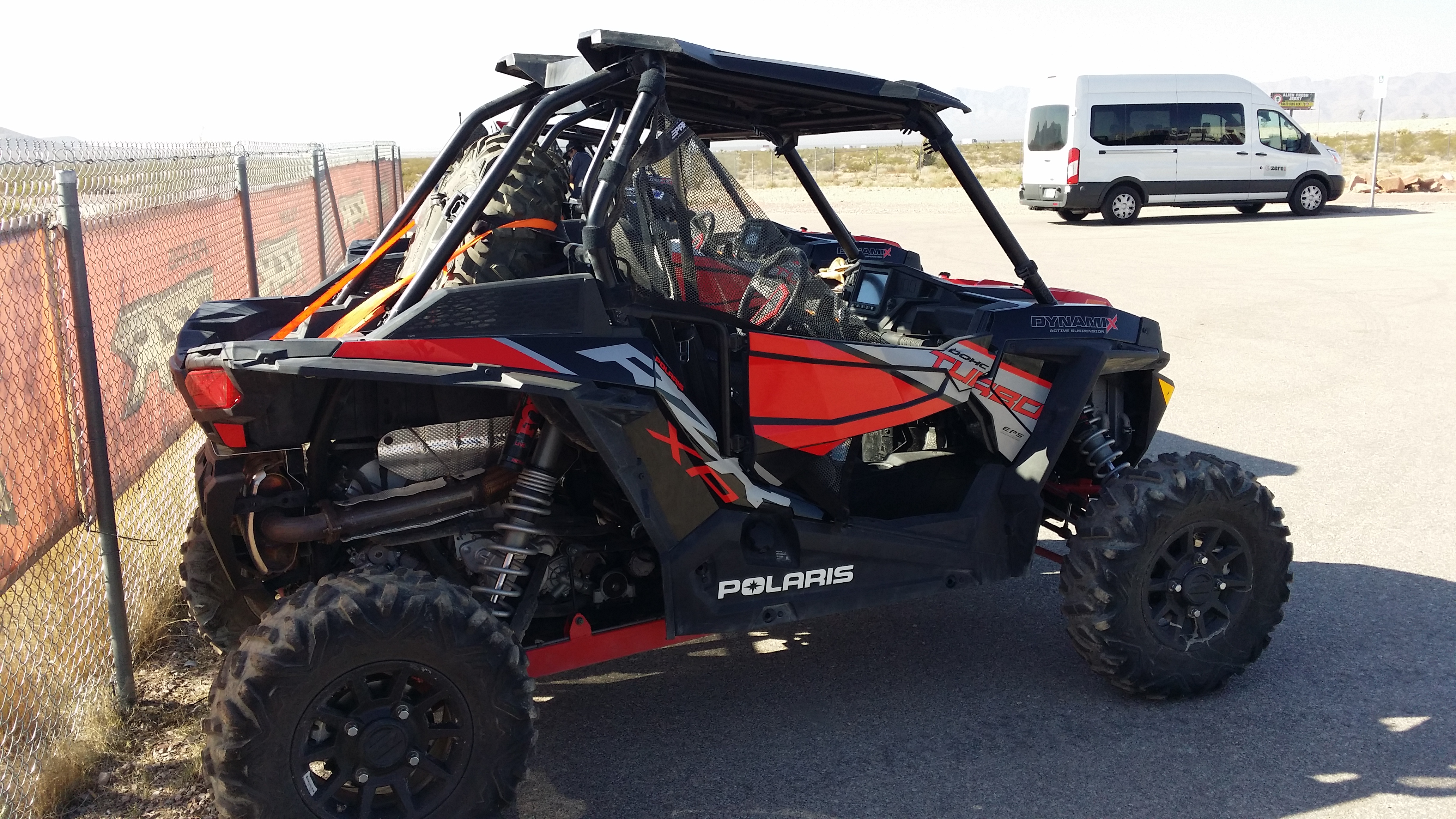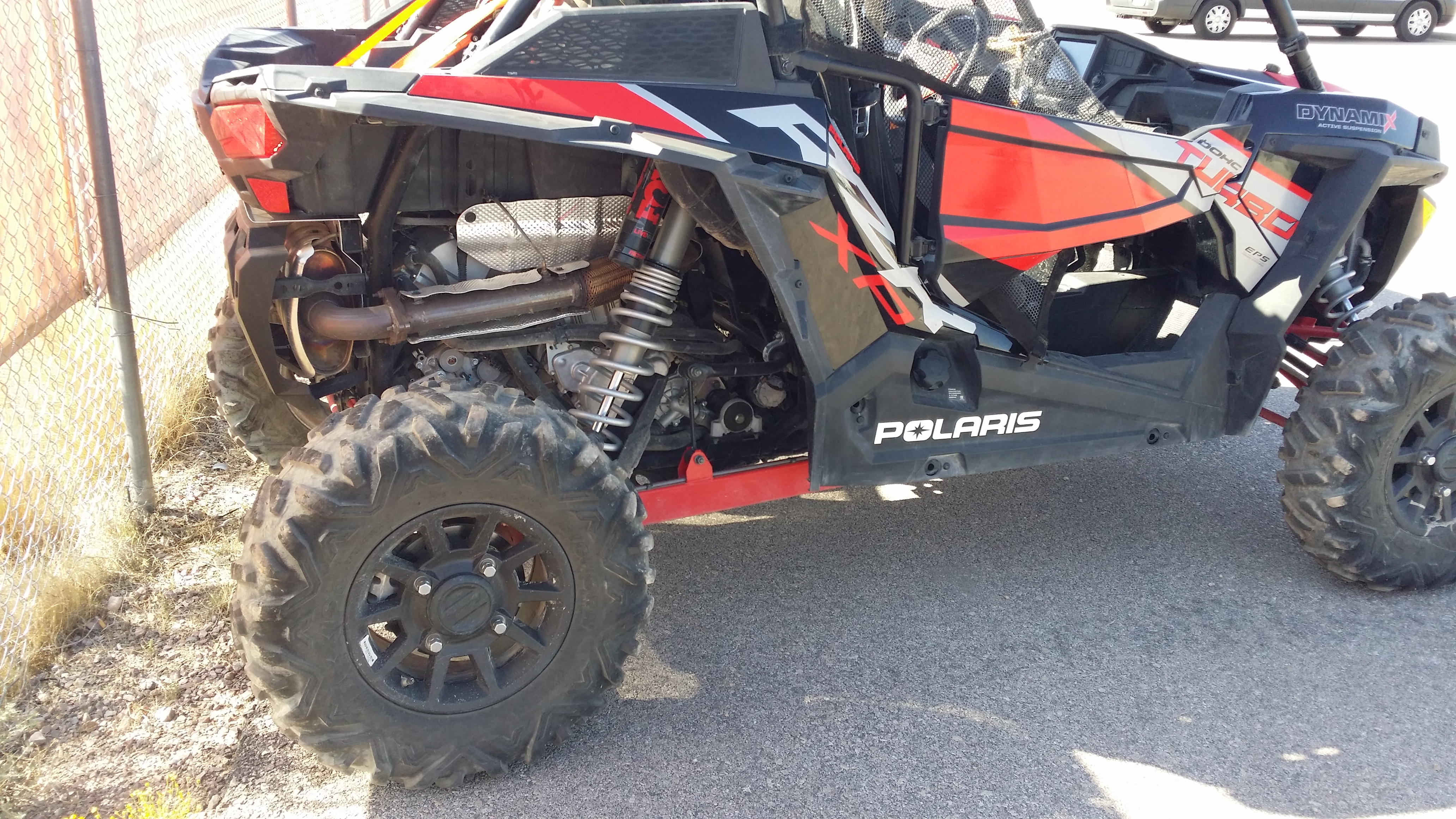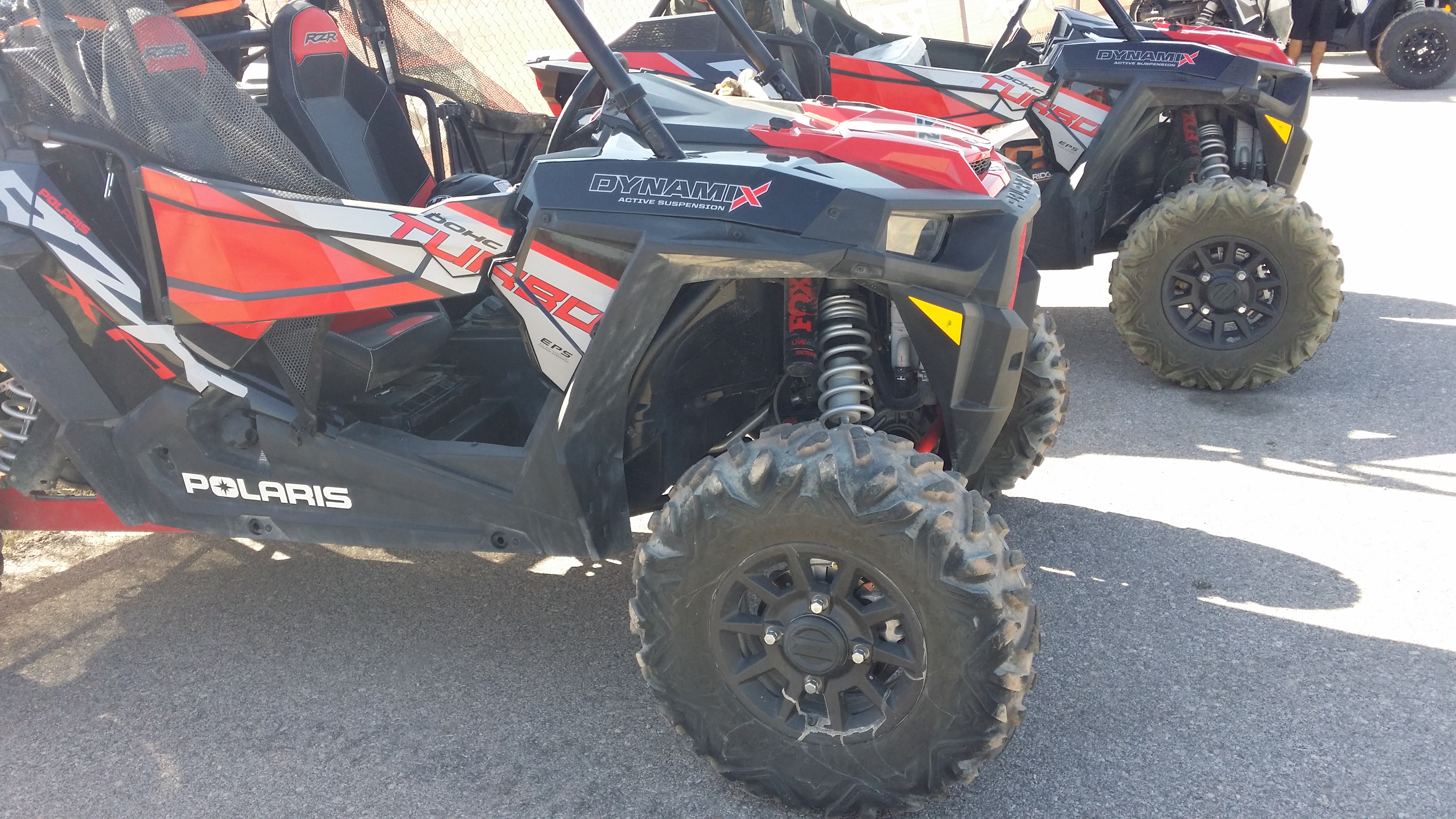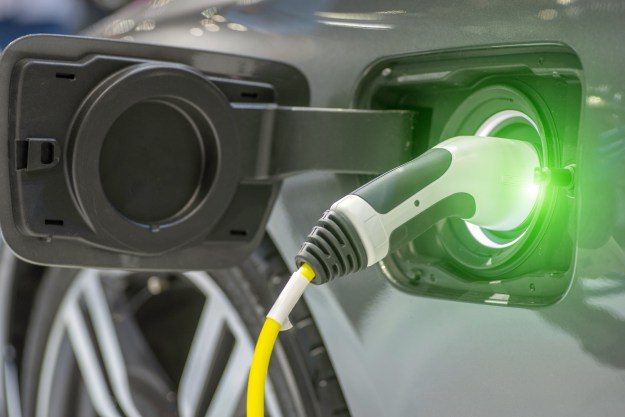Weight transfer matters with moving vehicles, and that basic principle is hammered home with every bump, jump, and turn with the 2018 Polaris RZR XP Turbo EPS Dynamix Edition, starting price $26,000.
Polaris refers to the 4×4 side by side (SxS) off-road fun machine as “The only ride that tunes on-the-fly.” The secret sauce is the Dynamix active suspension, available only on the top-of-the-line RZR model. This system monitors vehicle variables and driver actions up to 200 times a second to adjust the suspension to prevent body roll, nosedives, and shock bottoming.
The active suspension concept isn’t new. The 1955 Citroën DS was the first production car with an active suspension. Lotus developed the first computer-controlled suspension for race cars in the mid-1980s. More recently, Digital Trends test drove the 2018 Ford Mustang GT with its optional “Magneride” active suspension system.
You can’t totally overcome Newtonian physics and weight transfer with the Dynamix suspension. However, even a novice SxS pilot can quickly appreciate the suspension’s ability to keep the vehicle level on rough desert trails, even while moving at brisk speeds. I recently drove the RZR XP Turbo EPS Dynamix Edition, courtesy of Polaris, on a five-hour Zero1 RZR tour in the Mojave Desert. It was my first time driving this type of vehicle.
The RZR XP Turbo EPX Dynamix Edition has a 168-horsepower, liquid-cooled, 925cc turbocharged engine with an automatic transmission and on-demand 2-wheel and all-wheel drive. The driver and passenger sit in bolstered buckets seats with height-adjustable seat belts.
The 1,500-pound RZR has electronic power steering, 4-wheel hydraulic disc brakes with triple front and dual rear calipers, and rides on 29-inch Maxxis Bighorn tires mounted on cast aluminum wheels.
The Polaris Ride Command infotainment system with 7-inch glove-touch display, also found on some Indian Motorcycles and Slingshot 3-wheelers, adds the Dynamix Visualizer feature. In theory, you can watch the screen to see the suspension make adjustments on all four wheels as you drive. In practice, if you’re driving slow enough to watch the display, you’re missing out on the fun. After 10 minutes with Dynamix Visualizer mode turned on, it was obvious I could drive and have fun, or watch, but not both.

The Dynamix system was designed by Polaris in conjunction with Fox, the performance shock company. Sensors at each wheel and a central computer monitor vehicle speed, throttle position, braking, and steering position. The system also monitors vertical, lateral, and longitudinal movement with a 3-axis accelerometer and body roll, pitch, and yaw with a 3-axis gyrometer.
How does the active suspension help? When you go into a corner hard, the system tightens the outside shocks. It can adjust for countersteering if you’re in a drifting state of mind. Speed up and all four shocks stiffen. Hit the brakes and the front shocks adjust to lessen nose-diving and help avoid bottoming out. Go airborne and all four shocks tighten to maximum resistance to allow a safer, controlled landing.
There are three driving modes: Comfort, Sport, and Firm, selected via a 3-way rocker switch on the dashboard. Comfort is the softest setting and is best suited to relatively smooth roads and trails. Firm tightens all four shocks to full firmness — best for horrible terrain, extreme speeds, and expert drivers.
Sport mode blends performance and comfort. After starting with Comfort, I found the Sport mode perfect for a newbie on the Mojave’s rocky, dry-washed, gullied desert trails traveling at speeds of 25 to 45 mph.
The suspension adjusts so quickly the driver is unaware of the changes. It’s easy to assume that you’re just that good when the suspension forgives so many driving sins.
For example, let’s say you drive off the trail at speed to avoid a huge cactus that popped up out of nowhere on a curve and you go into a deep rut and fly right out, flail around in a tight circle, and get right back on the trail. It’s tempting to think the quick recovery was all driver skill — until you think again and realize the RZR XP Turbo EPS Dynamix just saved your butt.

